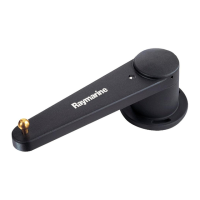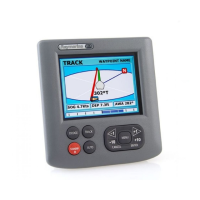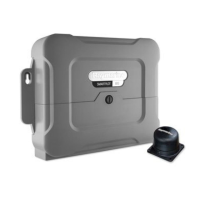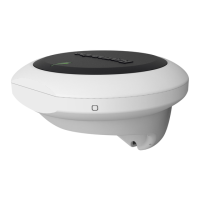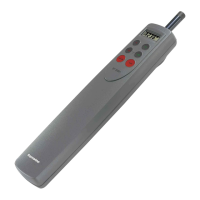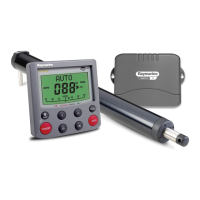Chapter 5: Commissioning the Autopilot 51
5 Commissioning the Autopilot
Adjusting rudder gain - high speed planing craft
WARNING:
It is particularly important to set rudder gain correctly on high
speed craft. Incorrect adjustment will lead to poor steering
performance and this can be dangerous at high speed.
Adjust rudder gain as follows:
• set the default rudder gain for optimum steering performance at
the boat’s normal cruising speed
• press the
RESP key to access the Rudder Gain screen: you can
then make temporary adjustments to rudder gain either side of the
calibrated setting to provide optimum autopilot steering
Due to the significant differences in dynamic stability between
planing and non-planing conditions, most high speed boats require
Rudder Gain adjustment when going from planing to displacement
speeds or vice versa. The required adjustment can be achieved
automatically or manually:
Automatic adjustment:
When the autopilot has speed input from a SeaTalk or NMEA speed
instrument, it will automatically adjust rudder gain with boat speed.
After setting the gain at planing speed no further manual adjustment
should be required.
WARNING:
When speed information is fed to the autopilot via the NMEA
input always check the displayed speed is close to the actual boat
speed before locking the autopilot onto a heading. Delays in data
transmission could result in the autopilot applying too much
rudder after a large change in boat speed.
Manual adjustment:
If no speed input is available, adjust rudder gain manually via the
RESP key:
1. Speed decreases from planing to displacement:
• increase rudder gain by 1 or 2 level
2. Speed increases from displacement to planing:
• decrease rudder gain by 1 or 2 levels
81013_4.book Page 51 Wednesday, July 25, 2001 11:04 AM

